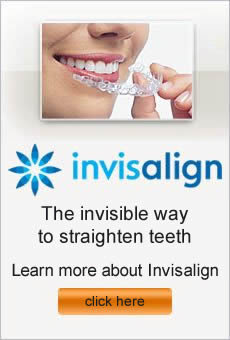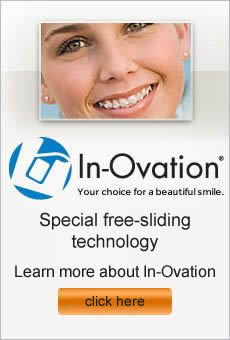Having braces isn’t always fun, especially when it comes to food intake. Most orthodontists tell their patients to avoid sticky snacks or hard candy because these food items can damage brackets and wires. Although there are some limitations on your diet, you still have lots of choices for healthy eating during orthodontic treatment.
Fruits and vegetables are alright. An important part of eating right, most people several servings of both categories each day. Hard fruits and vegetables, such as apples, carrots, and broccoli, can be tough to bite into, so cutting these foods into bite-size pieces so that back teeth can chew them will prevent any issues. Choosing soft options, like bananas or cooked squash, is another good option.
Go with whole grains. Since most grain products are soft, having braces shouldn’t impact your ability to eat regular breads or cereals. You may want to avoid unground whole grains because the seeds can get stuck in between your brackets.
Get your dairy on. Calcium helps keep your teeth strong, and dairy products are a great source of this mineral. Low fat milk, yogurt, and cheese are soft on your braces too.
Eat more chicken (or beef too). Certain cuts of meat can be tough and difficult to chew when you wear braces. Don’t eat meat straight off the bone, and select lean cuts of fish, beef, and chicken for easier chewing.
Sweet treats you can still enjoy. Although taffy, lifesavers, and gummy bears are temporarily off the menu, feel free to indulge in chocolate or a bowl of ice cream every once in a while.
It’s time to schedule a visit to our Sherman Oaks, CA orthodontic office – Mehdi Fotovat, DDS.
Most people desire a perfect smile because it makes them look and feel better about themselves. Certainly, boosting your confidence and outward appearance are perks of having straight teeth, but there are other reasons to consider orthodontic treatment. Properly aligned teeth can positively impact your oral health as well as create whole-mouth harmony.
Although straight teeth do look fantastic, they also promote optimal oral health. Crooked teeth are actually harder to keep clean, which can lead to problems such as gum disease or tooth decay. Less plaque and tartar build up when you have straight teeth, so patients can actually get between the teeth to take care of them. Correcting issues of crowding makes brushing and flossing easier, so you can enjoy a truly healthy smile.
Other side effects of untreated orthodontic issues can include abnormal wear of teeth surfaces, inefficient chewing, and excessive strain on supporting tissues. Misalignment of the jaw joints can also occur, which can result in headaches, neck pain, and other symptoms of TMJ disorder. Treating the orthodontic problem can cost less money, time, and discomfort than having to repair long-term damage to your mouth.
If you think you or a loved one might need orthodontic treatment, contact your orthodontist for a consultation appointment. At this time, the doctor can take X-rays, examine your whole mouth, and review the treatment options. Because of advances in orthodontics, patient have a variety of choices to straighten their teeth, including clear brackets, self-ligating brackets, and Invisalign clear aligners for adults or older teen patients.
We love creating beautiful, healthy smiles at our Sherman Oaks, CA orthodontic practice – Mehdi Fotovat, DDS.
A common question patients have when they are undergoing orthodontic treatment is whether or not they should continue seeing their dentist during that timeframe. The answer is yes, you should maintain your regular dental checkups even though you visit your orthodontic for periodic adjustments to your braces. Seeing your dentist throughout orthodontic treatment will help your teeth look their best when the braces are removed.
Cleanings
Professional teeth cleanings are the best way to fully get rid of plaque and tartar on your teeth. Food and bacteria can easily become hidden around your braces, causing plaque and tartar to build up around your bands, brackets, or appliances. Having your dentist clean your teeth will reduce your chances of developing cavities. If your braces are the clear Invisalign trays, you should still maintain regular dental checkups.
Decalcification
When calcium in your teeth is lost, it is called decalcification. This can lead to unsightly white spots on the surface of your teeth. If not treated, decalcification cannot be reversed and may cause cavities. Patients who avoid sugary or acidic foods, practice proper oral hygiene, and see the dentist regularly can avoid decalcification of their teeth.
Timing
The time that you have to undergo orthodontic treatment may be extended if you experience dental problems along the way. For instance, cavities can lengthen your treatment time. Your dentist can help you avoid cavities through professional cleanings and fluoride treatments. Seeing your dentist every six months will help you realize your goals of finishing orthodontic treatment.
Dr. Fotovat is a orthodontist in Sherman Oaks California.
Sometimes a person’s jaw is not big enough to allow the teeth to come in properly, which can create problems such as incorrect bites. If the jaw size isn’t corrected in time, it can require serious orthodontic treatment in the future. Palatal expanders provide a way to correct children’s jaws while they are still growing.
What is a palatal expander?
An orthodontist attaches a palatal expender in the roof of the patient’s mouth to widen the palate so that the jaws fit together correctly. The expander works over time to separate the two halves of the upper jaw to create a wider distance between them. To be effective, the palatal expander must be worn before the median suture of the jaws close together.
Why is it necessary?
A typical result of an untreated jaw formation is a cross bite, which often leads to problems with the temperomandibular joint, abnormal wear on teeth, and receding gums. Wearing a palatal expander prepares the mouth for additional orthodontic correction like braces, and makes room for permanent teeth and less crowding within jaws that are too small.
What is the process like?
To activate the expander, a small key-like device must be turned in the appliance. A parent or other adult should turn the key as instructed by the orthodontist, usually once a day until the desired expansion has occurred. Most patients wear the expander for three to six months. Although it works by putting pressure on the teeth, it is usually not painful. During wear, patients should avoid sticky or hard foods and brush their teeth carefully.
When is it effective?
Remember, palatal expanders only work while the jaw is still growing. Parents should monitor their child’s mouth for growth, and maintain regular dental checkups to identify problems early. If this problem isn’t treated during youth, it can mean painful and extensive procedures as an adult.
Orthodontist in Sherman Oaks CA for teens and adults.
If you are considering getting braces to improve your smile and the function of your mouth, you might require tooth extractions prior to getting the appliances on your teeth. Your orthodontist may recommend upon consultation that your treatment will be most effective after having some teeth removed. In fact, sometimes tooth extraction is the only way to achieve your goals for orthodontic treatment.
The most common reason for tooth extraction prior to braces is overcrowded teeth, in which space must be created to obtain proper tooth alignment. Doctors often recommend removing the teeth in sets of two or four, taking the same teeth from the top and the bottom at the same time. This helps create a symmetrical smile.
Another problem that can be aided from removing teeth is protrusion, which is when the upper teeth are out too far or the lower teeth are too far back. Tooth extraction can cause needed space to reposition the front teeth and stop the teeth and lips from protruding.
Overbites or underbites also sometimes require tooth extraction. When the upper jaw extends further than the lower jaw (overbite) or the lower jaw extends past the upper jaw (underbite), removing specific teeth can be helpful before moving the remaining teeth into better position. This can help prevent jaw surgery later.
If you and your orthodontist decide tooth extraction is best for you, often you will be referred to an oral surgeon. These specialists are trained to extract teeth with the ideal results and least pain. Usually you can return to your normal activities within a day or two of extraction, while following your doctor’s instructions for eating and oral care. Once your mouth has healed, you can return to your orthodontist to begin your braces treatment.



